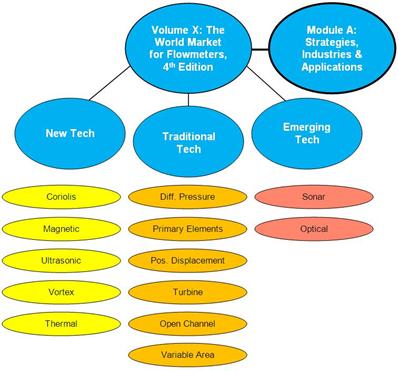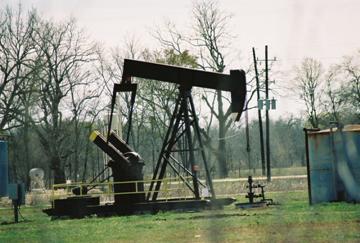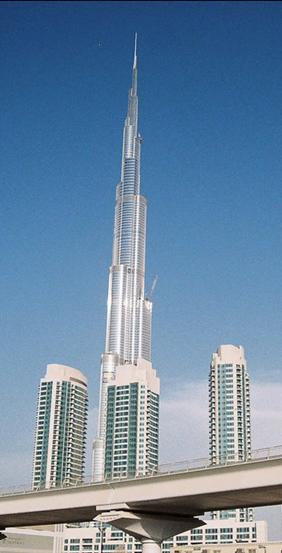| www.FlowTimes.com | www.FlowResearch.com |
welcome to
FlowTimes
– September 2014
Your
Update on Flow, Temperature, Level, and Pressure Measurement from Flow Research
Executive
Editor: Dr. Jesse Yoder; Volume 15, Number 2 - ISSN 1350-7204
1. The legend of the money tree and what we can learn from it
 At
Flow Research, we have many plants in our office.
We find that they help provide a healthy environment.
Many of them are Pothos plants, which fill the air with their long
vines of beautiful, variegated leaves.
We also have a number of Jade plants, and several Zamioculcas
Zamifolia (ZZ) plants with large, arching stems of shiny leaves.
At
Flow Research, we have many plants in our office.
We find that they help provide a healthy environment.
Many of them are Pothos plants, which fill the air with their long
vines of beautiful, variegated leaves.
We also have a number of Jade plants, and several Zamioculcas
Zamifolia (ZZ) plants with large, arching stems of shiny leaves.
| One day a poor, hardworking farmer discovered a completely unique plant in his fields. He decided to dig it up and bring it home. At home, he found that the plant was very resilient and grew with little care. He decided to use the plant as a model and be resilient and not to give up on his dreams. He took the seeds from the plant and used them to grow more money trees, which he sold. Eventually, he became a great entrepreneur. |
At Flow Research, our dream is to provide you with market studies you want that help you with your strategic planning. We have been resilient and hardworking in achieving this dream. Last fall we asked you what studies you would like us to do. We listened to what you said, and planned our 2014 and 2015 schedule around your votes. Your votes became the seeds for our study planning for the future. Now our business is growing faster than our money tree plant. We have put you, our best customers, in the driver’s seat when it comes to choosing study topics. And once we have the topics, we take it from there to create accurate and comprehensive yet beautiful studies that are rich in colorful charts and meaningful data. In this way, our studies resemble our money tree plant. — Jesse Yoder, President, Flow Research
2. New Volume X – You will love this study!
Our
latest study, released in August, is one of the most comprehensive studies
ever published of the worldwide flowmeter market.
This study is called Volume
X: The World Market for Flowmeters, 5th Edition.
At 724 pages, this All-in-One
Study tells you 2013 market
size and market shares, and forecasts through 2018 for all flowmeter
types used in process environments. What’s
more, you can have this study at your desk as early as today if you like.
Beginning
in January 2014, we began sending out over 400 questionnaires to all known
suppliers of every flow technology. The
questionnaire asked for geographic distribution and revenue information,
along with industries, applications, fluid types, and projected growth from
the base year of 2013. We
have analyzed the results and written a complete study of the worldwide
flowmeter market.
This is
the 5th edition of our study, which was first published in
2003. At that time, the
worldwide flowmeter market was $3.1 billion.
The market has grown substantially since that time, and we’ve
been there to document its growth every step of the way.
 The All-in-One Volume X
gives the flowmeter market for each flowmeter type worldwide and by region
in 2013. It makes it easy to
compare market size, market shares, and growth rates for all types of
flowmeters. We use the
bottom-up method of determining market size for each flowmeter type, and
then put these numbers together for the worldwide picture.
This is the only way to get a reliable picture of the world
flowmeter market and to find out how the different flowmeter types compare
with each other.
The All-in-One Volume X
gives the flowmeter market for each flowmeter type worldwide and by region
in 2013. It makes it easy to
compare market size, market shares, and growth rates for all types of
flowmeters. We use the
bottom-up method of determining market size for each flowmeter type, and
then put these numbers together for the worldwide picture.
This is the only way to get a reliable picture of the world
flowmeter market and to find out how the different flowmeter types compare
with each other.
The study
includes:
·
Market size in 2013 of the worldwide market by flowmeter
type in dollars and units
·
Market size forecasts by flowmeter type through 2018 in
dollars and units
·
Market shares for each flowmeter type in 2013
·
Both worldwide and regional market size and forecast data
·
Growth factors and market trends for all flowmeter
technologies
·
A technology description and analysis for each flowmeter
type, including major competitive strengths and weaknesses
·
A product line analysis for the major manufacturers of each
technology type
·
Company profiles with product information for easy
comparison.
The study
includes the following New-Technology flowmeter markets: Coriolis,
magnetic, ultrasonic, vortex, and thermal. It
includes these Traditional Technology flowmeter markets: differential
pressure, primary elements, positive displacement, turbine, open channel,
and variable area. Sonar and
optical are the Emerging Technologies covered.
In
addition to Volume X, we are publishing a companion volume called Module
A: Strategies, Industries, and Applications.
This popular volume gives segmentation by industry and application
for each flow technology. It
also discusses the underlying growth factors and driving forces behind the
different industries and applications. The
strategies section shows you how to get an edge in a competitive market.
For complete information, visit http://www.flowvolumex.com.
3. New edition of pressure transmitters market study to be released soon
Flow Research is working on The World Market for Pressure Transmitters, 4th Edition, which will be published in the next several weeks. The 3rd Edition of this study, published in August 2011, observed that pressure transmitter revenues had grown substantially during the previous five years. Further, it was noted that the total size of the worldwide pressure transmitter market was nearly half the size of the worldwide flowmeter market in terms of revenues. We believe this market is strong and will continue to hold its own in the instrumentation world.
The World Market for Pressure Transmitters, 4th Edition will give you the up-to-date view of this market with information you need to assess your business opportunities. The study will:
·
Determine the size of the pressure transmitter market in
2013, worldwide and by nine geographic regions –
· Include thorough segmentation by types
· Forecast market growth for all types of pressure transmitters through 2018
· Determine worldwide 2013 market shares for major suppliers of pressure transmitters
· Identify factors affecting market growth
· Identify industries and applications where pressure transmitters are used, and to focus especially upon high growth areas
· Analyze products of the main companies selling into the pressure transmitter market
· Profile main pressure transmitter suppliers
· Offer strategies to manufacturers for selling into the pressure transmitter market
For more information, please visit http://www.pressureresearch.com or contact us directly.
4. Key trends in pressure transmitters
The
pressure transmitter market has grown substantially in the past several
years. While multivariable and
DP flow transmitters compete with other flow technologies, there is no
corresponding competition for absolute and gauge pressure transmitters. Here
are some of the top trends in this market:
· Multivariable Transmitters
· Multivariable Transmitters with Integrated Flow Element
· Wireless Transmitters
·
Energy
The above trends were excerpted from a Flow Research article called Pressure Transmitter Perspectives: Technology trends, application scenarios & market insights, August 2014. For the full article, please visit: http://www.flowresearch.com/articles.htm
For more
information on Flow Research’s findings on pressure transmitters, please
visit http://www.pressureresearch.com,
and, of course, feel welcome to contact us directly.
5. Emerson Opens New Flow
Loop
Facility
This facility is designed to replicate three-phase flows in oil and gas production and will play a key role in ensuring that Emerson continues to support its oil and gas customers by delivering reliable and accurate topside and subsea flow meters that operate across all reservoir conditions over the lifetime of a well.
The 200 m² flow loop facility will also increase capacity to run Factory Acceptance Tests (FAT) without relying on third party facilities, thereby improving delivery times. The new facility is also an important tool for research and development, enabling easy access for the testing of both existing and new technologies and concepts.
The flow loop facility mixes diesel, salted tap water and nitrogen to imitate the multiphase flow coming out of oil and gas production wells. Emerson’s Micro Motion® ELITE® Coriolis meters provide reference measurements and Emerson’s DeltaV™ distributed control system is used to control and operate the flow loop and log data from the reference instrumentation and the multiphase meters being tested.
The new
facility is part of Emerson’s global investment in flow measurement
technology facilities and services and adds to the existing flow
manufacturing and service network, including facilities in the
For quarterly updates on all the flowmeter technologies, see our Market Barometer at http://www.worldflow.com.
6. As fracking methods evolve, prices go up
The method of fracking to extract oil or gas from subterranean rock demands sand. This year almost 95 billion pounds of sand are predicted to be used by frackers – an increase of 30% from last year. To frack a single well can require as much as four million pounds of sand but companies are testing out the idea that even more sand could yield even more oil and gas. Experimentation by companies such as Pioneer Natural Resources Inc. is suggesting that yield could increase by as much as 30% with more sand.
For sand miners, this is a wonderful development. U.S. Silica Holdings Inc., for instance, is quickly taking advantage of the situation: It has raised prices for much of its sand and is planning to raise the price of the finer grades of sand by 10% to 20%. A quantity of this will find its way to oil producers. U.S. Silica predicts that demand for sand will exceed supply by as much as 25% in 2014.
The sand need is so intense, that oil companies are ‘making due’ with lower quality sand, such as the brown sand found in states such as Texas and Arkansas.
Preferred Sands plans to use new and expanded mines to swell sand production. However, despite the boom for sand miners, there is one problem: As Chief Executive Michael O’Neill noted, it is becoming difficult to get hold of enough railcars to transport sand from the mines to the oil fields. To take full advantage of the steadily growing demand from frackers, Preferred Sands is being backed by KKR & Co, a private equity firm. KKR and Preferred Sands are looking at $680 million in debt and equity to restructure Preferred Sands’ balance sheet. KKR’s Jamie Weinstein (co-head of their special solutions team) says, “We believe the Incremental demand for sand over time is only going to increase.”
For
quarterly updates on the oil & gas, refining, and power &
renewables industries, see our Energy Monitor at http://www.worldflow.com.
7. New edition of
vortex flowmeter market study in the works
Flow Research is working on The World Market for Vortex Flowmeters, 5th Edition, projected for publication in Q3 2014.
Growth in
the vortex flowmeter market has historically been relatively slow.
However, while the vortex flowmeter market is smaller than
ultrasonic, Coriolis, or magnetic flowmeters in terms of market size, user
interviews show that interest in vortex flowmeters remains strong for
a combination of reasons. More
suppliers have entered this market over the years.
There have been enhancements in vortex meter technology to improve
accuracy, reliability, and address issues of vibration.
Another significant event was that
vortex flowmeters finally received the approval of the American Petroleum
Institute (API) for use in custody-transfer applications in January 2007. Custody
transfer is a critical flowmeter application and an area with market
growth potential. For both
ultrasonic and Coriolis flowmeters, approvals in the form of standards for
their use in custody transfer have been significant market growth factors.
We believe that this is an optimal time, and a number of suppliers have expressed interest, for us to take a fresh look at how these factors and others have affected the vortex flowmeter market.
The World Market for Vortex Flowmeters, 5th Edition will include worldwide market size and market shares for all vortex flowmeters in 2013, market growth forecast through 2018, industries and applications where vortex flowmeters are used, and main supplier profiles and product analysis.
This
study addresses the following key issues in the vortex flowmeter market:
· The factors causing the market to grow
· Growth in the use of multivariable flowmeters
· The effects of the API’s adoption of a custody transfer standard on vortex sales
· The use of vortex flowmeters in district heating applications
· The increased number of suppliers in the vortex flowmeter market
· Line sizes for vortex flowmeter applications
· The use of vortex flowmeters in steam applications
· The importance of reducer vortex flowmeters
· New product and technology developments
· Growth strategies for vortex flowmeter suppliers
Vortex meters are the most versatile type of meter—they can readily measure liquid, gas, and steam flow. Other new-technology meters, such as ultrasonic and Coriolis, can readily measure liquids and gases, but have difficulty with steam. Thermal meters are used almost exclusively for gas flow, while magnetic flowmeters excel at measuring liquids, but cannot measure steam or gas flow. Vortex meters are the only new-technology meter that readily measures all three fluid types.
Vortex flowmeters are well suited for measuring steam flow, in particular, and they are widely used for this purpose. Steam is the most difficult fluid to measure due to its high pressure and high temperature, and because the measurement parameters vary with the type of steam. Main types of steam include wet steam, saturated steam, and superheated steam.
In addition to their ability to tolerate high process temperatures and pressures, vortex meters have wide rangeability. This allows them to measure steam flow at varying velocities.
For more information, please visit http://www.flowvortex.com, or contact us directly.
8. Oil Prices Rise
as World Walks a Tightrope of Supply and Demand
 Oil
supply and demand worldwide are very closely matched, though supply
exceeds demand by a small amount. As
a result, a major disruption in supply can upset the balance and move it
closer to even. This close
balance means that the world is walking a tightrope of supply and demand.
Oil
supply and demand worldwide are very closely matched, though supply
exceeds demand by a small amount. As
a result, a major disruption in supply can upset the balance and move it
closer to even. This close
balance means that the world is walking a tightrope of supply and demand.
The trend
is towards greater demand with flat to declining supplies.
Some major oil fields such as those in
Most of the advanced economies of the world depend on having an adequate oil supply. But the supply-demand balance has an impact on oil prices. As oil prices rise, these economies may suffer. This is one of many reasons why there is such a push now to discover new sources of oil.
The
Middle East is the world region with the largest supply of oil, and
The price
of oil is normally measured in terms of the price of a barrel of crude oil
which contains 42 gallons. But
there is not a single price of oil. Instead,
there are many different types of oil, and they are differently priced.
Oils are classified both as to their origin, and according to
whether they are light and sweet or heavy and sour.
Heavy, sour crude oils have a high sulfur content and are more
expensive to refine. Certain
crude oils have become ‘benchmarks’ for the price of oil as a whole. These
include West Texas intermediate (WTI) Crude Oil (
For a complete analysis of the worldwide oil market, including high-producing regions and countries, along with an analysis of the worldwide flowmeter market, see our 6-volume series called The World market for Oil and Oil Flow Measurement. This series of studies is over 2,800 pages long, and includes oil production, reserve, consumption, import, and export figures by region and for many oil-producing countries. It also provides data on flowmeters used for oil flow measurement by flowmeter type.
Also see Pipeline and Gas Journal, August 2014 for a major article on the oil markets.
9. Introducing the
Multi-Tech flowmeter classification
“Multi-tech” is a term that is short for multiple technology. Multi-tech flowmeters have been around for many years, but have never been recognized as a class of meter. Multi-tech meters are ones that either use multiple technologies to make a flow measurement or in conjunction with a flow measurement, or meters that have a design that is used with multiple flow technologies to measure flow. So, it could be said, multi-tech flowmeters are those that either: 1. Use one or more technologies in addition to their flowmeter principle of operation; or 2. Are cross-technology flowmeters.
Some multi-tech flowmeters use other technologies in addition to their flowmeter operating principle. For example, multivariable flowmeters use pressure and/or temperature sensors to help determine the density of the fluid. They then compute fluid density in light of the actual process conditions. These meters use the density measurement together with a volumetric flow measurement to determine mass flow. Mass flow controllers use either a thermal or differential-pressure method to compute mass flow and add a control valve to control the flow. Mass flow controllers, which can be considered a type of flowmeter with a control function, are another type of multi-tech flowmeter.
Another type of multi-tech flowmeter makes use of a flowmeter technique or design that works with multiple flow technologies. Examples of these types are insertion, battery-operated, and wireless flowmeters. All of these meter types have a certain technique or method in common, and they can be used with more than one type of flowmeter. The insertion method can be used with vortex, thermal, magnetic, ultrasonic, and with other types of flowmeters. Battery-operated flowmeters are used when flowmeters are placed in remote locations, and when portability is desired. Wireless flowmeters are used to reduce wiring, installation, and maintenance costs. These meters are called cross-technology multi-tech meters.
Multivariable DP flowmeters rely on a multivariable DP transmitter that typically incorporates both temperature and pressure sensors.
Multivariable Vortex meters combine a volumetric flow measurement with temperature and/or pressure sensors to compute mass flow.
Mass Flow Controllers use a control valve to control the flow as well as measure it, although some are shipped without a control valve.
Insertion Flowmeters are so-called because the sensor is inserted into a pipe, usually through a hole that is drilled into the pipe. Some different types of insertion flowmeters include magnetic, ultrasonic, turbine, vortex, and thermal.
Battery-Operated & Wireless Flowmeters: Battery-operated flowmeters are used when flowmeters are placed in remote locations, and when portability is desired. Wireless flowmeters are used to reduce wiring, installation, and maintenance costs. These meters are called cross-technology multi-tech meters.
 10.
Upcoming studies from Flow Research
10.
Upcoming studies from Flow Research
—
Planning your study needs
through
2015
The World Market for Magnetic Flowmeters, 5th Edition (514 pages) – January 2014 – Published!
The World Market for Pressure Transmitters, 4th Edition – Q3 2014
The World Market for Vortex Flowmeters, 5th Edition – Q3 2014
Volume X: The World Market for Flowmeters, 5th Edition (724 pages) – August 2014 – Published!
· Volume X: Module A: Strategies, Industries, and Applications – Q3 2014
The World Market for Natural Gas and Gas Flow Measurement, 3rd Edition – Q4 2014, Q2 2015 — The studies in this series are:
· Core Study: The World Market for Gas Flow Measurement – Q4 2014
· Module A: Regional Gas Flowmeter and Natural Gas Markets Worldwide – Q2 2015
· Module B: Gas Producers in Mideast/Africa – Q2 2015
· Module C: The World Market for Custody Transfer of Gas – Q4 2014
· Module D: Strategies, Industries and Applications – Q4 2014
· Module E: The World Market for Multiphase Flowmeters, 2nd Edition – Q1 2015
· Module F: The World Market for Liquefied Natural Gas (LNG) – Q2 2015
The World Market for DP Flow Transmitters, 2nd Edition – Q4 2014
The World Market for Primary Elements, 2nd Edition – Q4 2014
The World Market for Flow Calibration Facilities – Q1 2015
The World Market for Level Measurement Devices – Q2–Q3 2015 — Studies in this series:
Core Study: The World Market for New-Technology Level Devices – Q2 2015
Module A: The World Market for Traditional and Emerging Level Devices – Q3 2015
Module B: Strategies, Industries, Applications, and End-User Perspectives – Q3 2015
Module C: Worldwide Level Devices Market View – Q3 2015
For more
information on all Flow Research studies, visit http://www.flowstudies.com.
It lists our studies by category and provides direct links to pages for
the latest editions, where you will find a synopsis, or you can click a
link for the overview with full details.
Of course, there are also easy order forms and our contact links
and information.
What
do you think of FlowTimes? We
welcome your comments! Please
send any comments or suggestions to jesse@flowresearch.com.
FlowTimes
is published by Flow Research, Inc.
Executive
Editor:
Dr. Jesse Yoder – jesse@flowresearch.com
Associate
Editor:
Leslie Buchanan – leslie@flowresearch.com
Assistant
Editor:
Vicki Tuck – vicki@flowresearch.com
Production
Assistant:
Nicole
Riordan – nicole@flowresearch.com
 |
Flow
Research, Inc.
|